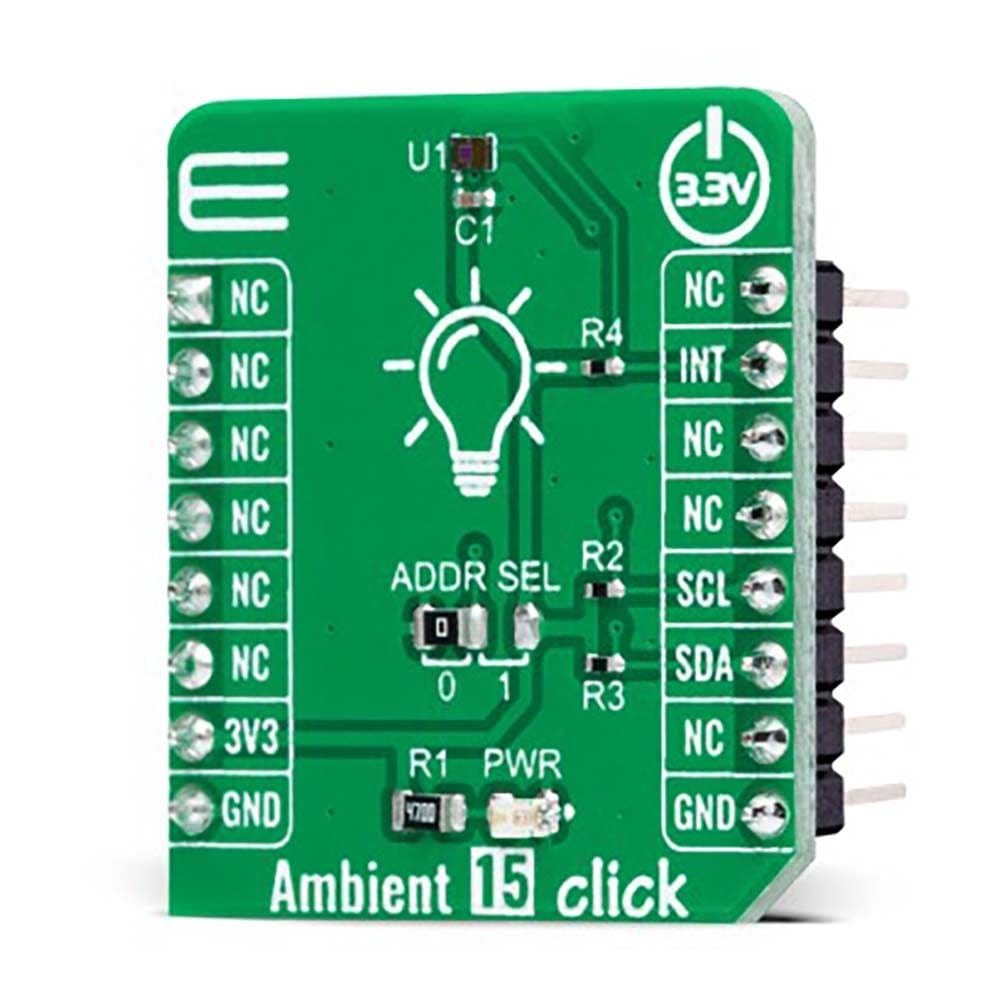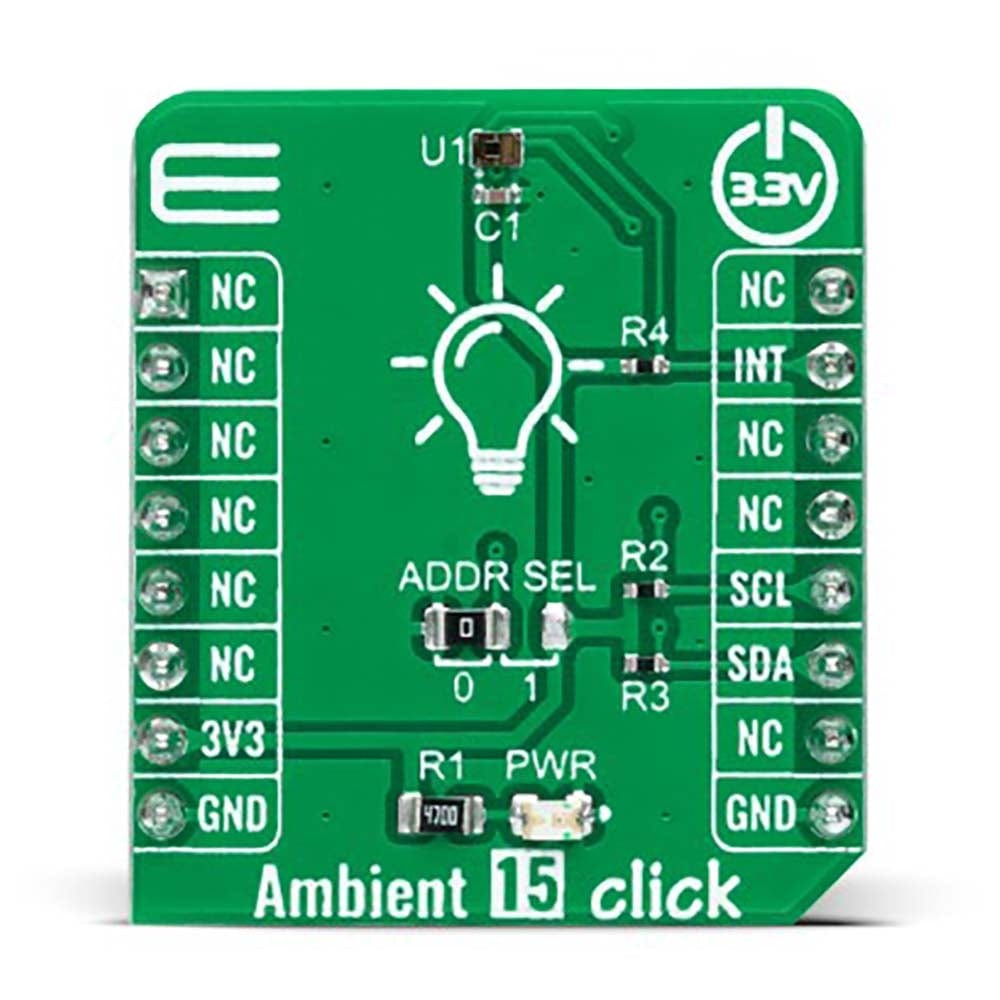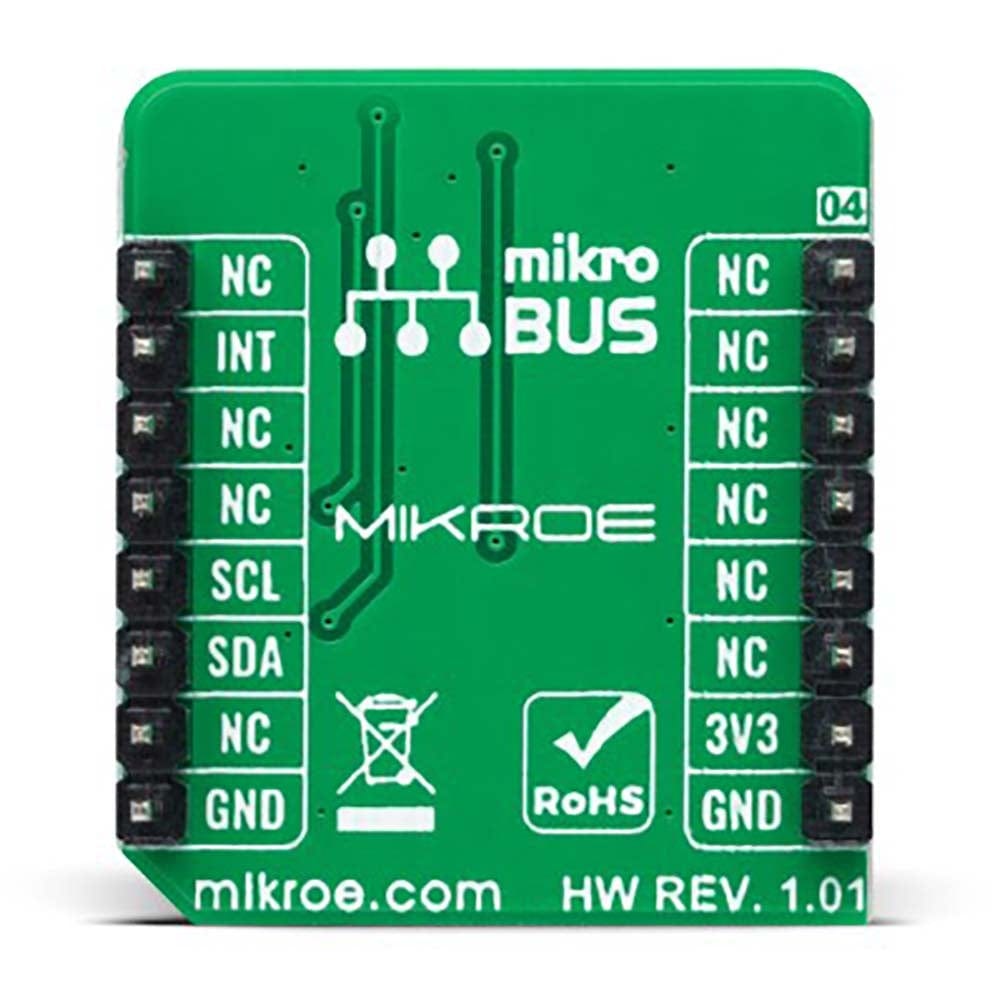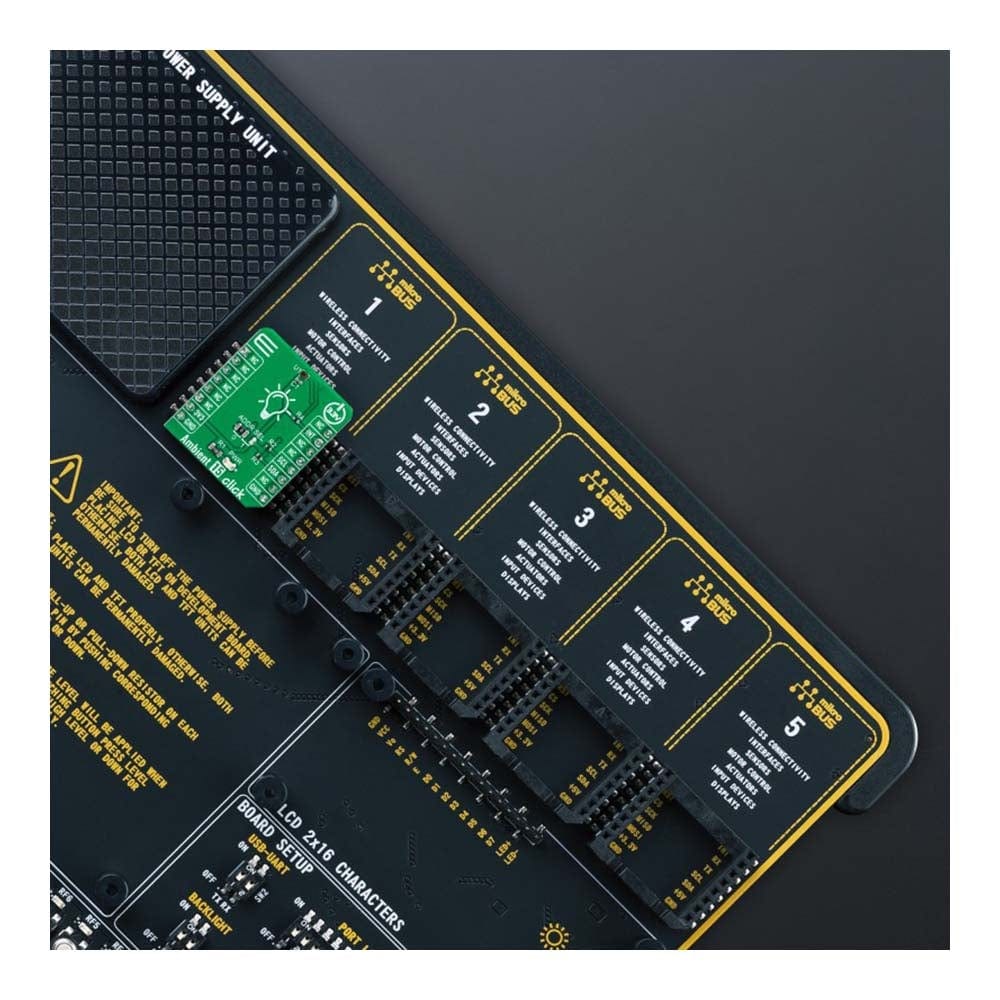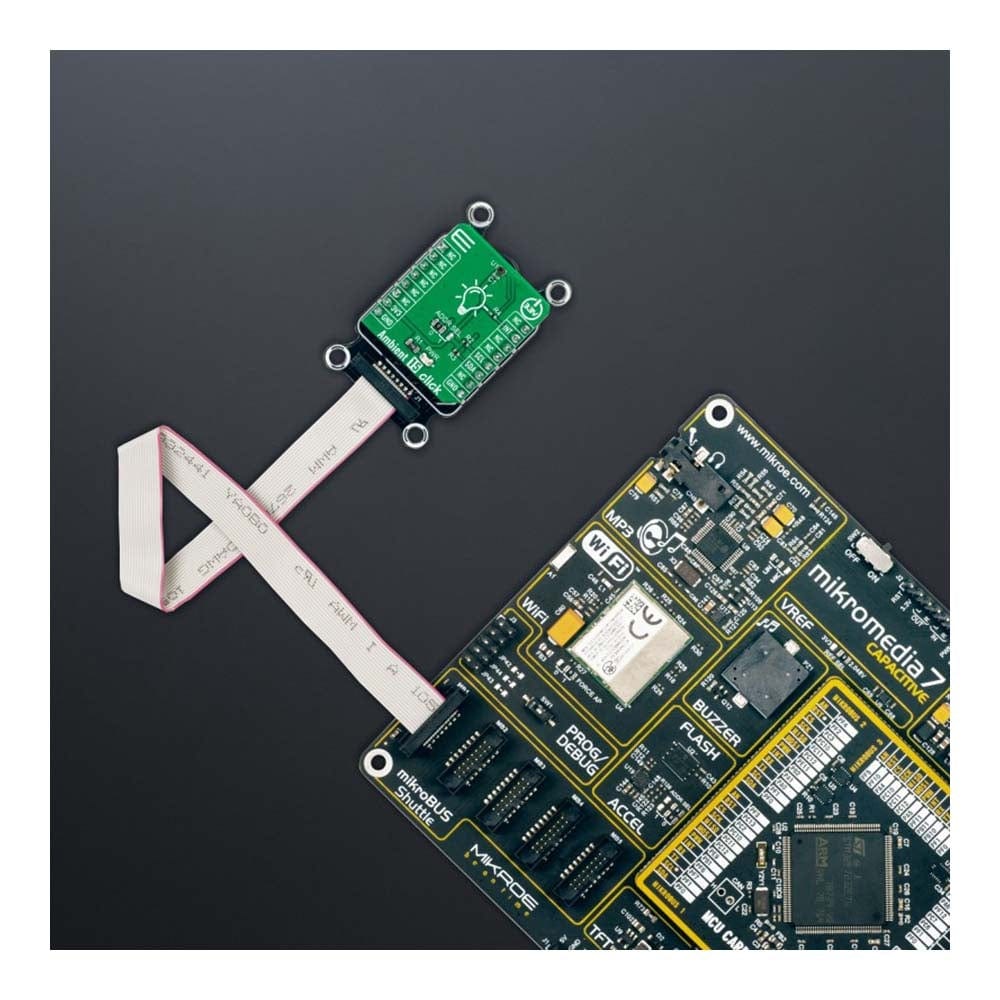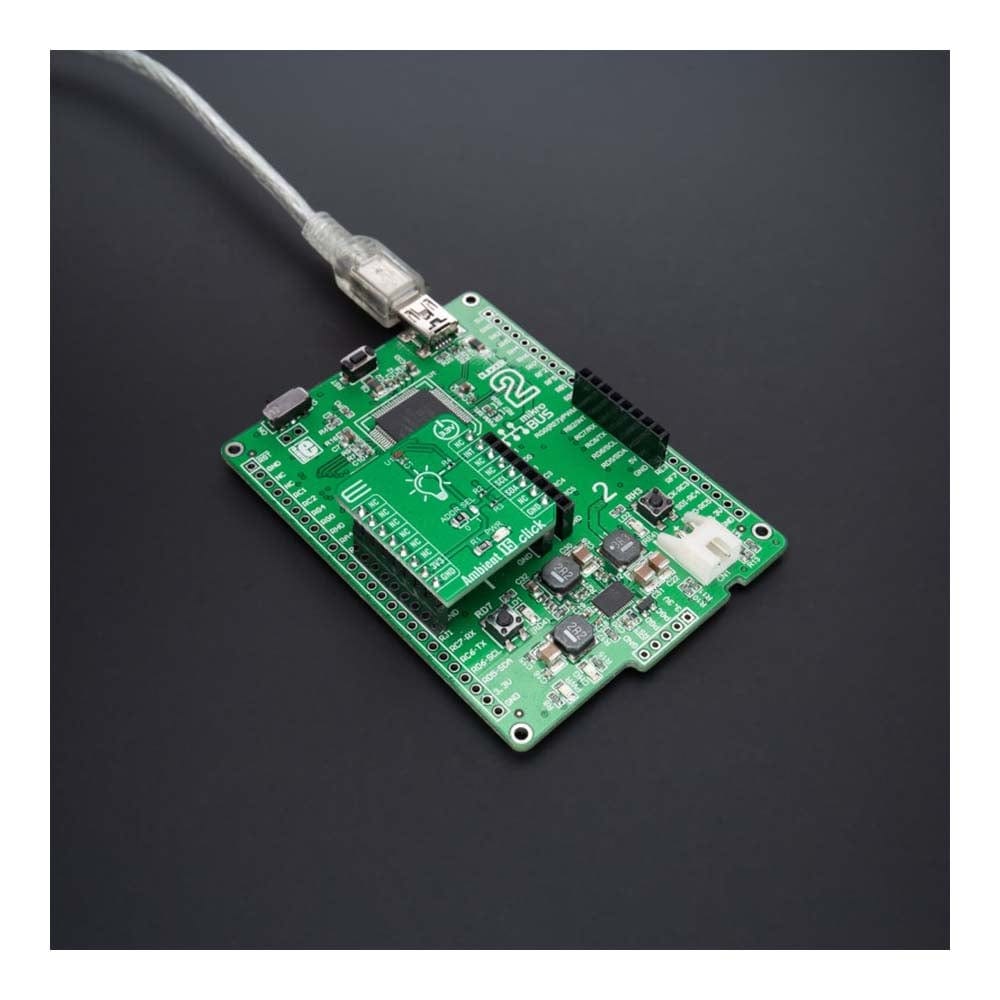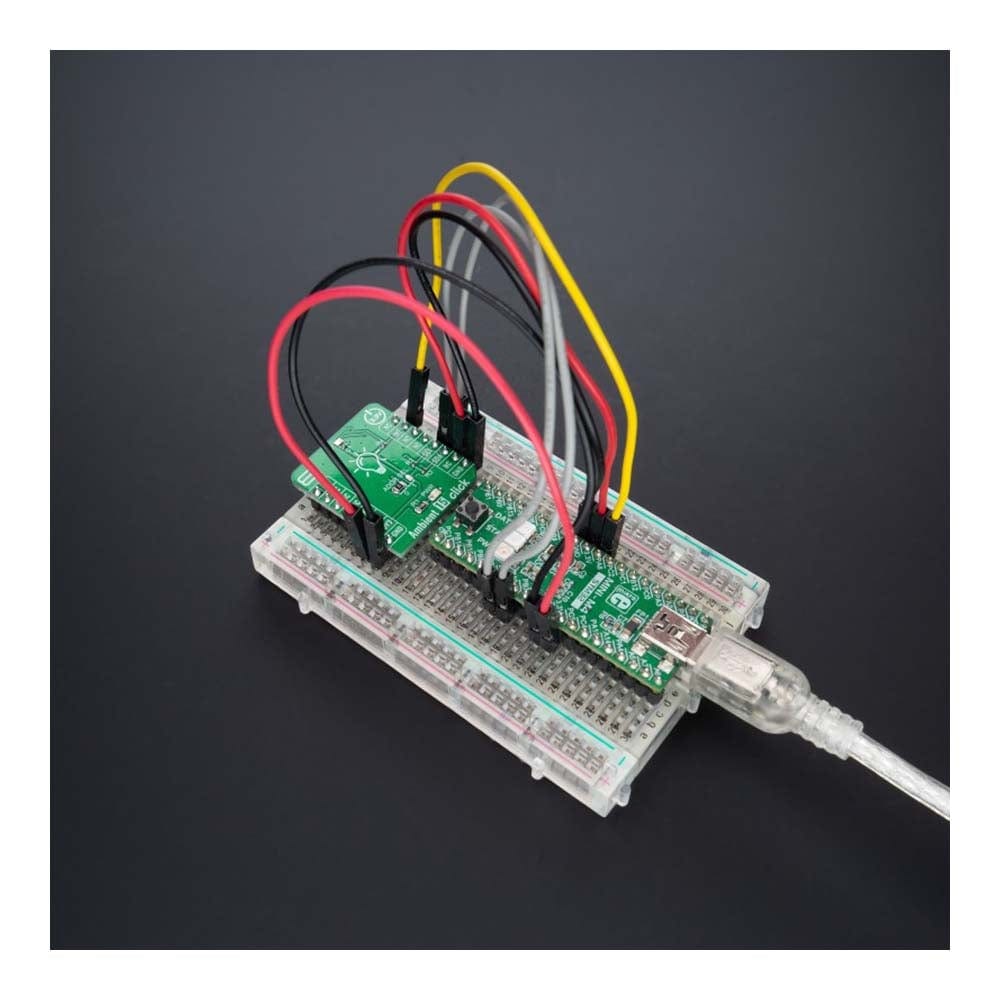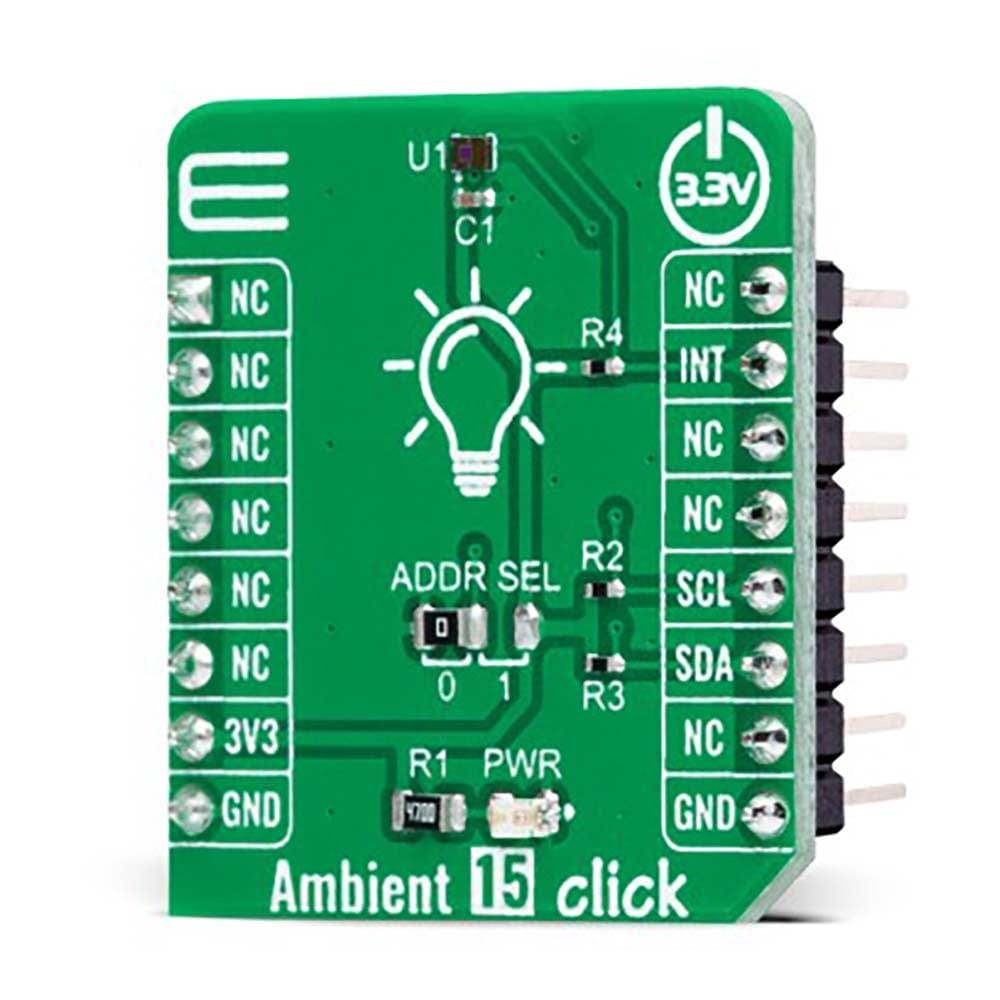
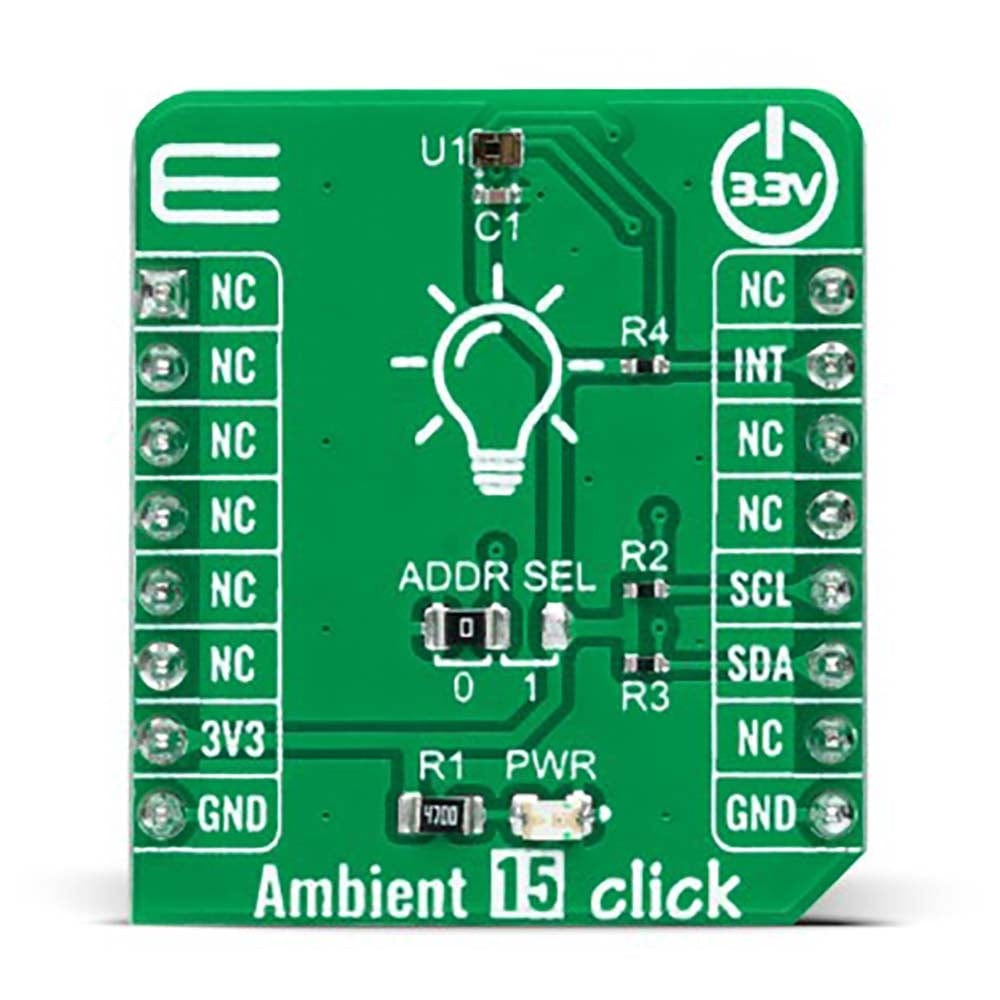
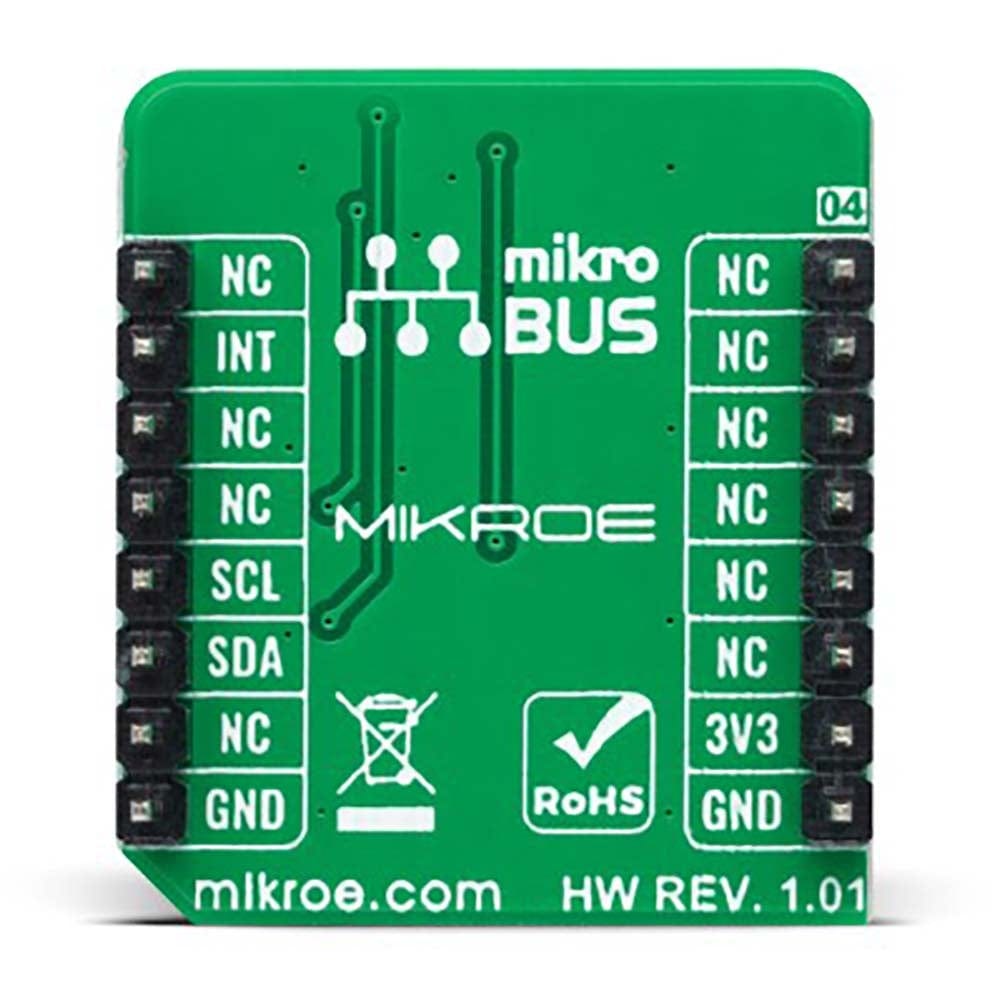
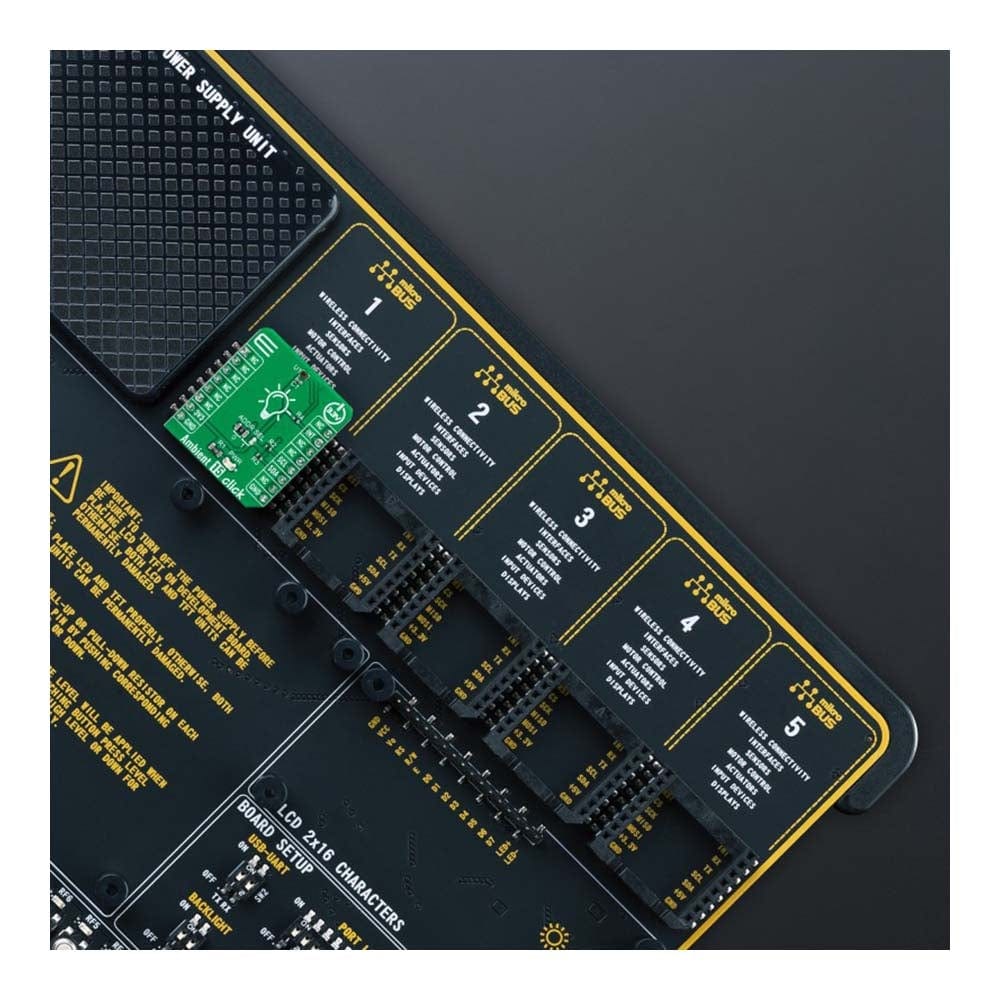
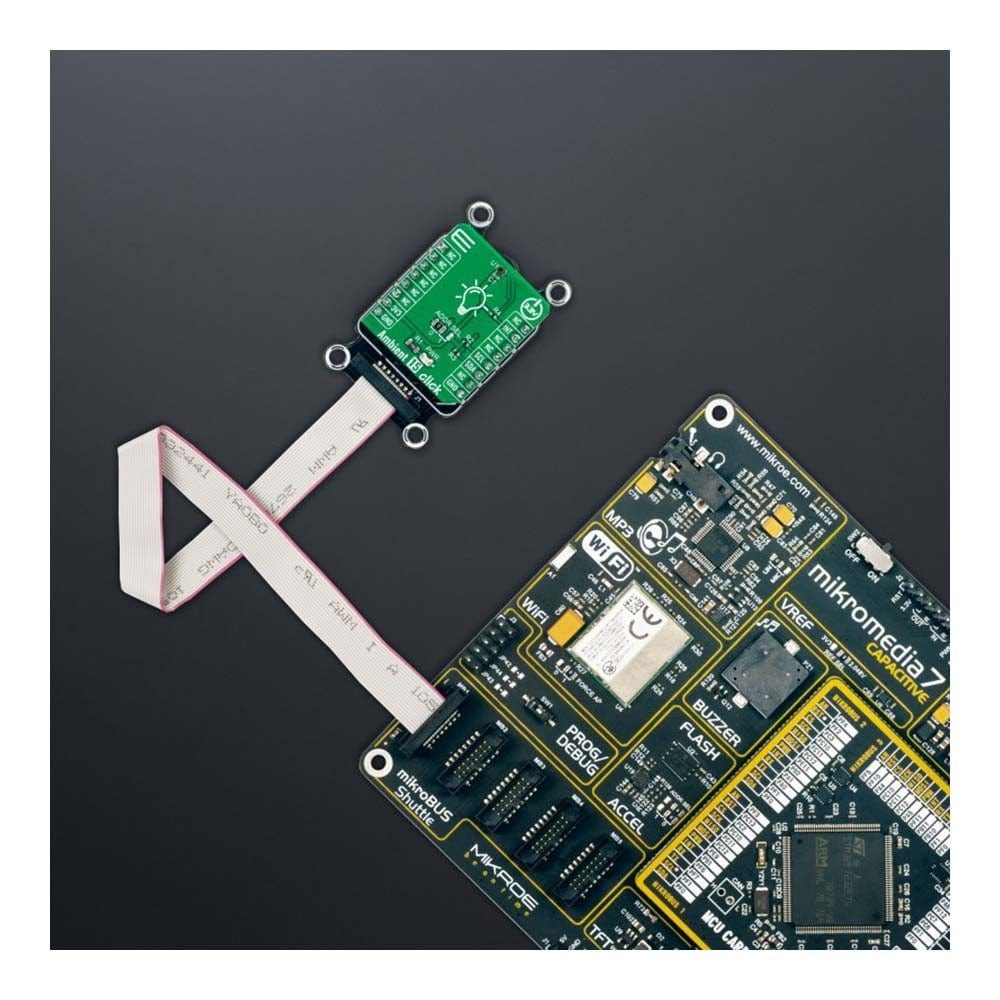
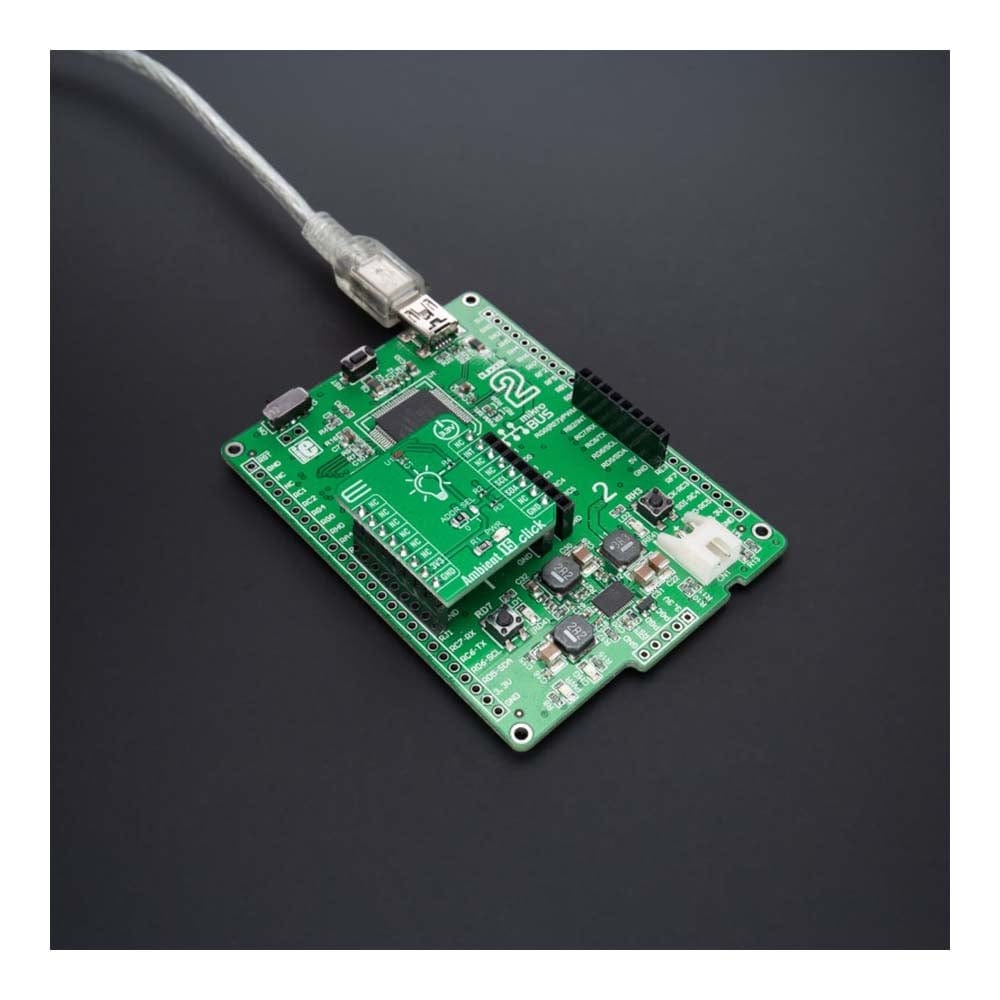
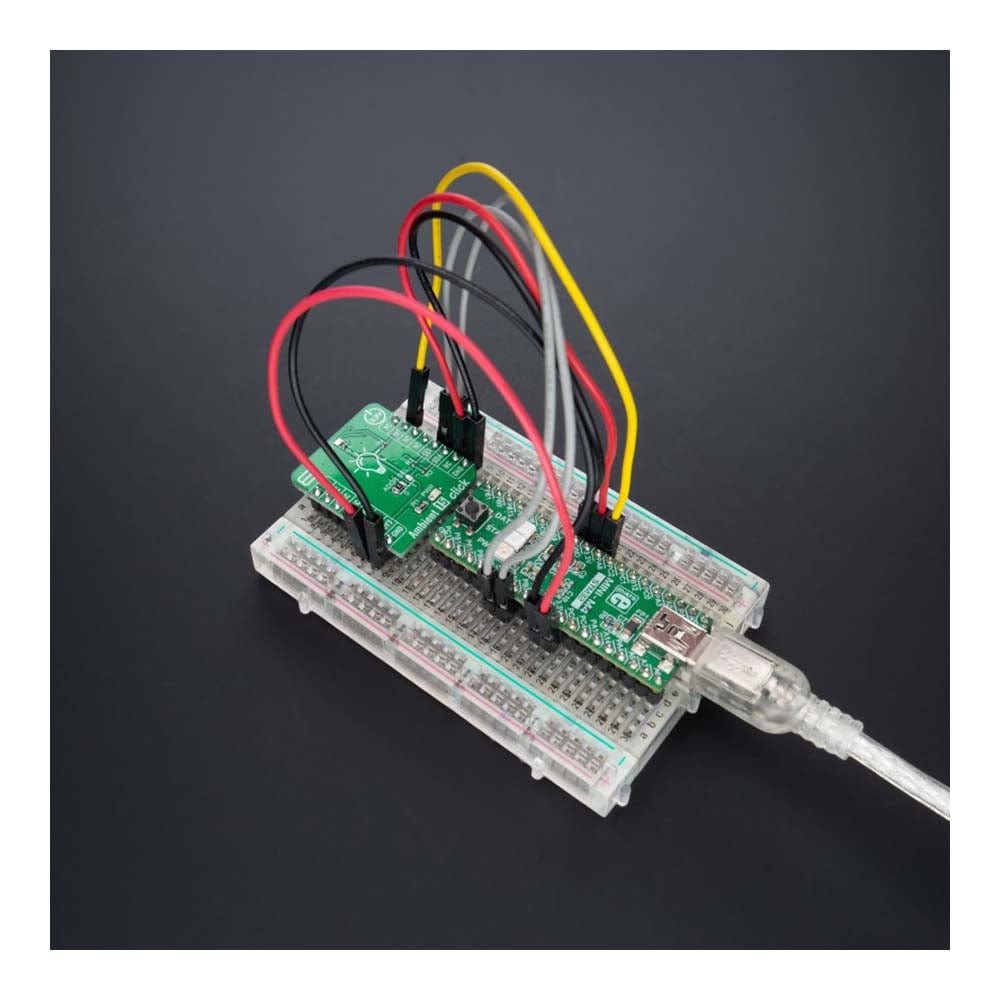
Overview
The Ambient 15 Click Board™ is a compact add-on board used to measure the amount of the present ambient light. This board features the TSL2584TSV, a very-high sensitivity light-to-digital converter with an I2C interface that transforms light intensity into a digital output signal from AMS-AG. The TSL2584TSV’s near-photopic response produces a highly accurate lux measurement up to 33klx even when mounted behind dark glass. Filtering out unwanted IR light enables the sensor to measure the ambient light more accurately, thus producing a near-photopic response. It is designed to control the brightness in various applications based on ambient light availability, brightness for optimum visibility, and energy efficiency. Operation in a temperature range of -40°C to 85°C ensures stable operation under extreme conditions. This Click board™ is the most suitable for obtaining ambient light data for adjusting brightness in applications that require power saving and better visibility.
The Ambient 15 Click Board is supported by a mikroSDK compliant library, which includes functions that simplify software development. This Click board™ comes as a fully tested product, ready to be used on a system equipped with the mikroBUS™ socket.
Downloads
How Does The Ambient 15 Click Board™ Work?
The Ambient 15 Click Board™ as its foundation uses the TSL2584TSV, a high sensitivity light-to-digital converter that transforms light intensity into a digital output signal from AMS-AG. Thanks to its near-photopic response, the TSL2584TSV can detect a wide range of highly accurate lux measurements up to 33klx, even when mounted behind dark glass. Filtering out unwanted IR light enables the sensor to accurately measure the ambient light, thus producing a near-photopic response. It also has stable performance over a wide temperature range of -40°C to 85°C, suitable for measuring the present ambient light.
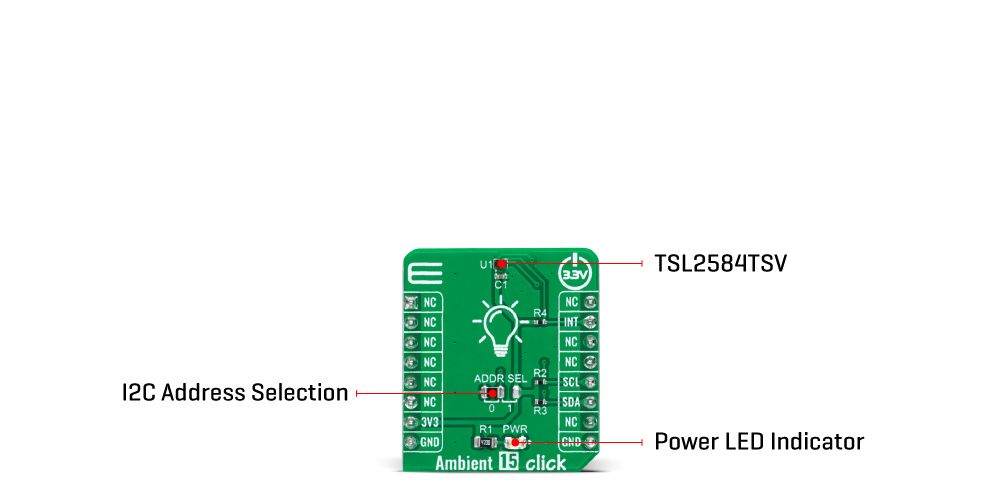
The TSL2584TSV combines one broadband photodiode (visible plus infrared), one infrared-responding photodiode, and, as mentioned before, a photopic infrared-blocking filter on a single CMOS integrated circuit. Two integrating analog-to-digital converters (ADC) convert the photodiode currents into a digital output representing the irradiance measured on each channel. Integration of both channels occurs simultaneously. Upon completion of the conversion cycle, the conversion result is transferred to the Channel 0 and Channel 1 data registers. The transfers are double-buffered to ensure that the integrity of the data is maintained. After the transfer, the device automatically begins the next integration cycle.
The Ambient 15 Click Board™ communicates with MCU using the standard I2C 2-Wire interface to read data and configure settings, supporting Standard Mode operation with a clock frequency of 100kHz and Fast Mode up to 400kHz. Besides, the TSL2584TSV allows choosing the least significant bit (LSB) of its I2C slave address using the SMD jumper labelled ADDR SEL. It also possesses an additional interrupt signal, routed on the INT pin of the mikroBUS™ socket labelled as INT, indicating when a specific interrupt event occurs, such as detecting a meaningful change in light intensity.
The Ambient 15 Click Board™ can be operated only with a 3.3V logic voltage level. The board must perform appropriate logic voltage level conversion before using MCUs with different logic levels. However, the Click board™ comes equipped with a library containing functions and an example code that can be used, as a reference, for further development.
SPECIFICATIONS
| Type | Optical |
| Applications | The Ambient 15 Click Board™ be used for obtaining ambient light data for adjusting brightness in applications that require power saving and better visibility |
| On-board modules | TSL2584TSV - high sensitivity light-to-digital converter that transforms light intensity into a digital output signal from AMS-AG |
| Key Features | Low power consumption, corresponds to a dark window because of high sensitivity, close responsivity to the human eye, I2C interface with selectable slave address, wide illumination range, stable performance over temperature, and more |
| Interface | I2C |
| Compatibility | mikroBUS |
| Click board size | S (28.6 x 25.4 mm) |
| Input Voltage | 3.3V |
PINOUT DIAGRAM
This table shows how the pinout of the Ambient 15 Click Board™ corresponds to the pinout on the mikroBUS™ socket (the latter shown in the two middle columns).
| Notes | Pin |  |
Pin | Notes | |||
|---|---|---|---|---|---|---|---|
| NC | 1 | AN | PWM | 16 | NC | ||
| NC | 2 | RST | INT | 15 | INT | Interrupt | |
| NC | 3 | CS | RX | 14 | NC | ||
| NC | 4 | SCK | TX | 13 | NC | ||
| NC | 5 | MISO | SCL | 12 | SCL | I2C Clock | |
| NC | 6 | MOSI | SDA | 11 | SDA | I2C Data | |
| Power Supply | 3.3V | 7 | 3.3V | 5V | 10 | NC | |
| Ground | GND | 8 | GND | GND | 9 | GND | Ground |
ONBOARD SETTINGS AND INDICATORS
| Label | Name | Default | Description |
|---|---|---|---|
| LD1 | PWR | - | Power LED Indicator |
| JP1 | ADDR SEL | Left | I2C Address Selection 0/1: Left position 0, Right position 1 |
AMBIENT 15 CLICK ELECTRICAL SPECIFICATIONS
| Description | Min | Typ | Max | Unit |
|---|---|---|---|---|
| Supply Voltage | - | 3.3 | - | V |
| Illuminance Measurement Range | 0 | - | 33.000 | lx |
| Operating Temperature Range | -40 | +25 | +85 | °C |
| General Information | |
|---|---|
Part Number (SKU) |
MIKROE-4967
|
Manufacturer |
|
| Physical and Mechanical | |
Weight |
0.02 kg
|
| Other | |
Country of Origin |
|
HS Code Customs Tariff code
|
|
EAN |
8606027389665
|
Warranty |
|
Frequently Asked Questions
Have a Question?
Be the first to ask a question about this.

